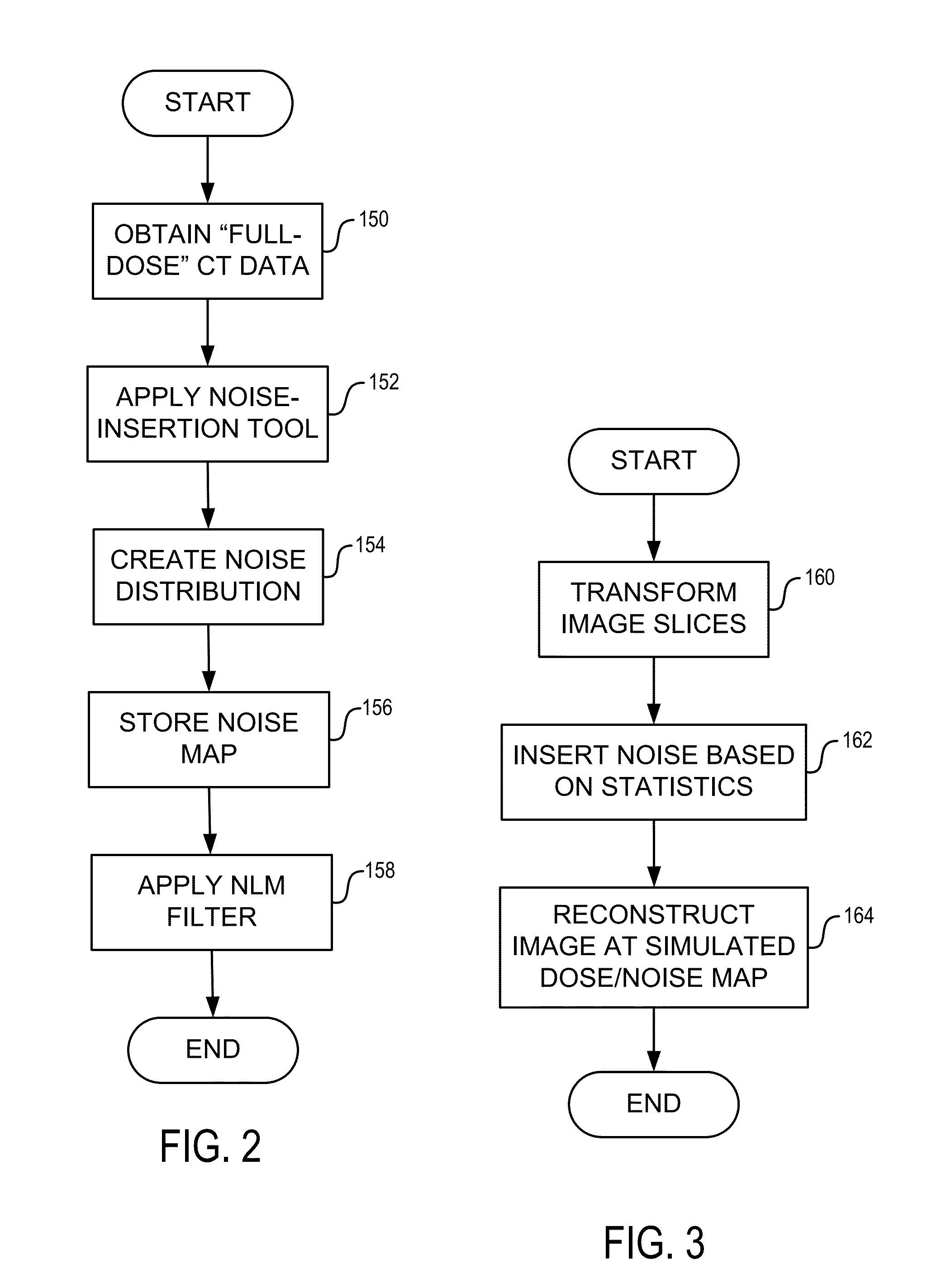System and Method for Controlling Radiation Dose for Radiological Applications
a radiological application and radiation dose technology, applied in the field of medical imaging, can solve the problems of affecting patient safety, affecting the safety of patients, and affecting the accuracy of diagnosis, so as to reduce the local nose level
- Summary
- Abstract
- Description
- Claims
- Application Information
AI Technical Summary
Benefits of technology
Problems solved by technology
Method used
Image
Examples
Embodiment Construction
[0027]With initial reference to FIGS. 1A and 1B, a computed tomography (CT) imaging system 110 includes a gantry 112 representative of at least a “third generation” CT scanner. In the illustrated example, the gantry 112 has a pair of x-ray sources 113 that each project a fan beam or cone beam of x-rays 114 toward a detector array 116 on the opposite side of the gantry 112. The detector array 116 is formed by a number of detector elements 118 that together sense the projected x-rays that pass through a medical patient 115. During a scan to acquire x-ray projection data, the gantry 112 and the components mounted thereon rotate about a center of rotation 119 located within the patient 115 to acquire attenuation data.
[0028]The rotation of the gantry 112 and the operation of the x-ray source 113 are governed by a control mechanism 120 of the CT system 110. The control mechanism 120 includes an x-ray controller 122 that provides power and timing signals to the x-ray sources 113 and a gant...
PUM
 Login to View More
Login to View More Abstract
Description
Claims
Application Information
 Login to View More
Login to View More - R&D
- Intellectual Property
- Life Sciences
- Materials
- Tech Scout
- Unparalleled Data Quality
- Higher Quality Content
- 60% Fewer Hallucinations
Browse by: Latest US Patents, China's latest patents, Technical Efficacy Thesaurus, Application Domain, Technology Topic, Popular Technical Reports.
© 2025 PatSnap. All rights reserved.Legal|Privacy policy|Modern Slavery Act Transparency Statement|Sitemap|About US| Contact US: help@patsnap.com



